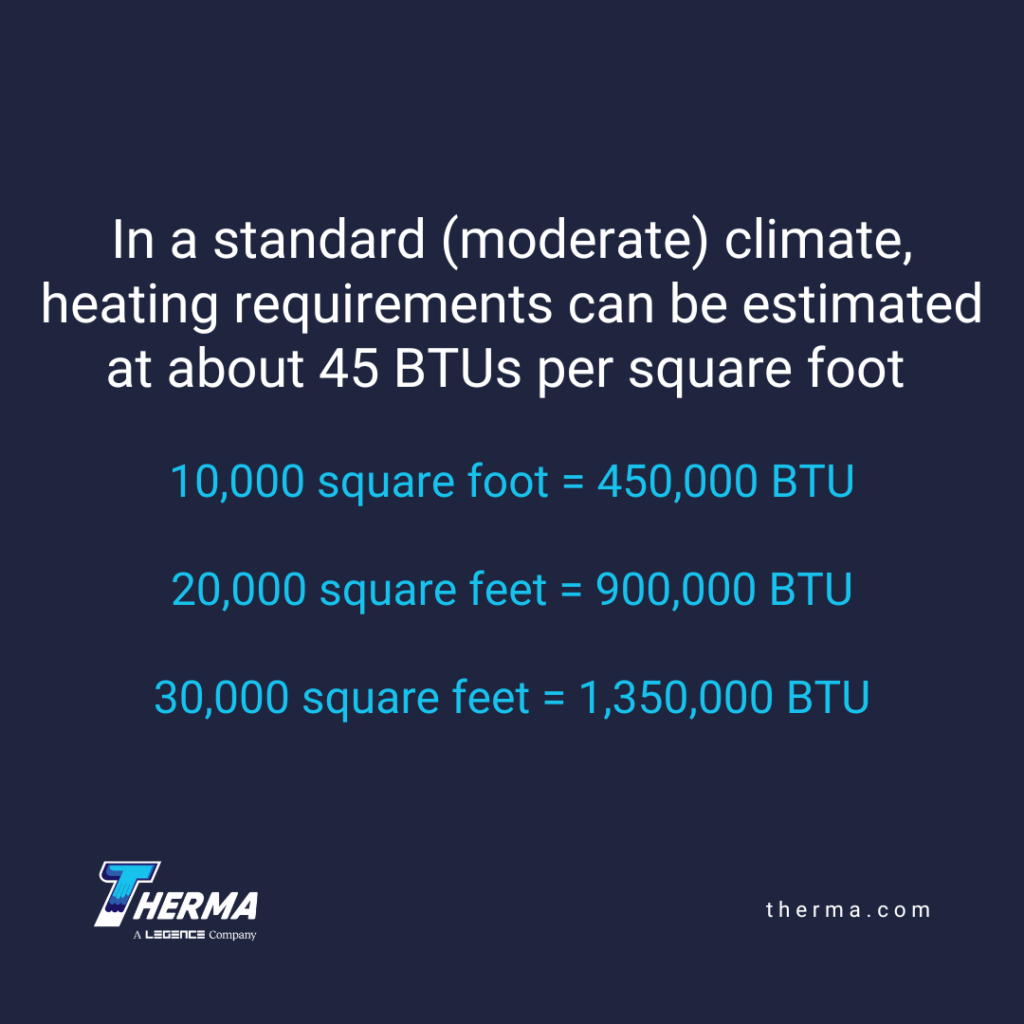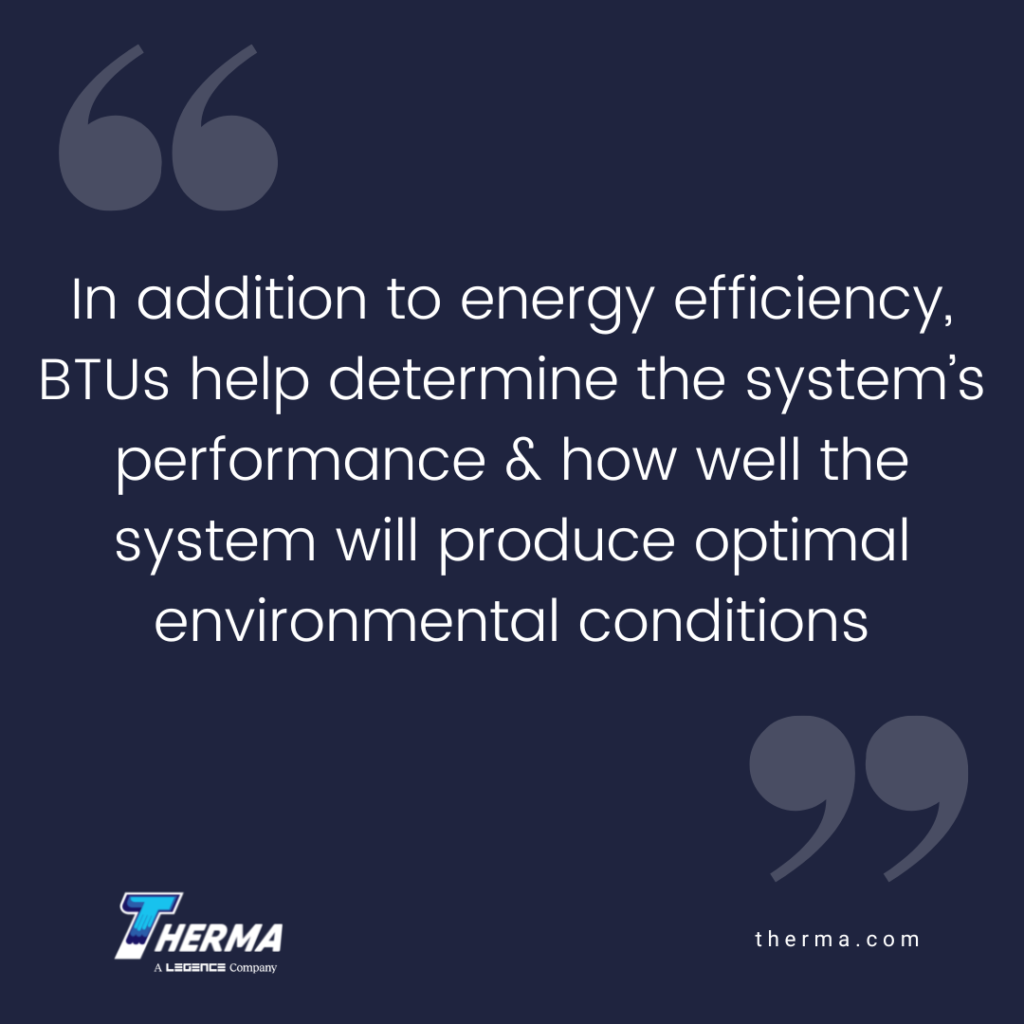by Ali Kriscenski
In HVAC systems, there are several measures and ratings that are important factors for energy efficiency. One of the measures most relevant to HVAC system efficiency is BTU or British Thermal Unit. A BTU is the measure of heat content of fuels or energy sources. It is the amount of energy required to raise one pound of water one degree Fahrenheit (at sea level) and plays an important role in system sizing and performance.
How BTUs Impact Building Systems
When reviewing equipment specifications, BTUs are commonly listed for several reasons. This performance measure indicates the capacity of the device to heat or cool and also relays the energy load it will add to the electrical system. BTUs are used to convey the capacity of air conditioners, furnaces and heat pumps. As a single measurement, a BTU is a small unit, so the measure of HVAC equipment can be in 1000s or 10000s.
While BTUs convey capacity, they are often coupled with efficiency ratings such as AFUE ratings to provide a complete picture of equipment performance. For example, a furnace with a BTU capacity of 100,000 also uses 100,000 BTUs of energy, such as electrical. An AFUE rating of 85% would mean that 15% of the energy used would not convert to heating.
Importance of BTU Ratings
In addition to energy efficiency, BTUs help determine the system’s performance and how well the system will produce optimal environmental conditions. An undersized system will not be able to meet heating or cooling demands and can contribute to humidity issues. An oversized system will run in more fluctuating cycles, leading to temperature and humidity variations.
BTUs, Equipment Maintenance and Lifespan
Choosing the right equipment capacity for your building has a direct impact on your long-term operating costs and ROI of the system itself. When equipment is installed with BTU that is either too low or too high, the performance will be lower than optimal. HVAC equipment that operates above or below its capacity can reduce a system’s lifespan. This is due to running too much, for instance, to meet heating or cooling demand — or, by running in short cycles that increase wear and tear on the equipment
BTUs and Sizing HVAC Equipment
The BTU capacity required of HVAC equipment is directly related to the building size and volume, envelope and insulation, and glazing sizes and condition. The International Energy Conservation Code (IECC) climate zone also affects the BTU requirements, with consideration of seasonal temperatures and humidity.
Building Size
The square footage of your building is a primary factor in equipment sizing and BTU rating. The square footage relative to BTUs needed varies among the seven climate zones. In a standard (moderate) climate, heating requirements can be estimated at about 45 BTUs per square foot.
- 10,000 square foot = 450,000 BTU
- 20,000 square feet = 900,000 BTU
- 30,000 square feet = 1,350,000 BTU
Building Envelope
In addition to square footage, the building envelope can affect HVAC system requirements. Insulation, weatherstripping, siding and roof condition are all considerations that affect HVAC system capacity requirements.
Windows and Glazing
Window ratings and conditions factor into system sizing as well. Energy loss through windows can be as much as 25-30%, according to the U.S. Department of Energy. (DOE) Buildings with larger or older windows can be less insulated and require additional heating and cooling capacity to compensate for the energy loss.
Making the Right Investment
Whether you are looking at heat pumps, furnaces or air conditioning equipment, understanding the importance of BTU ratings can help you hone in on the right system for your building. The expertise of an HVAC professional can provide the needed insight to identify heating and cooling requirements, calculate system demand based on all factors and properly size a system for your space. Contact Therma’s team of experts to learn more.
Ali Kriscenski was trained in high-performance building design at Boston Architectural College. She has worked with leading architecture and construction firms in NYC and New England and served on the executive team at the Forest Stewardship Council International. She was the managing editor at Inhabitat and has worked pro bono for the Green Building Institute, ISEAL Alliance and Habitat for Humanity.
Sources
Learn Metrics – Heating BTU Calculator
Whole Building Design Guide – High Performance HVAC
CSE Mag – HVAC codes and standards: cooling and energy efficiency
U.S. Department of Energy (DOE) – Energy Efficiency
U.S. Department of Energy (DOE) – Update or Replace Windows









